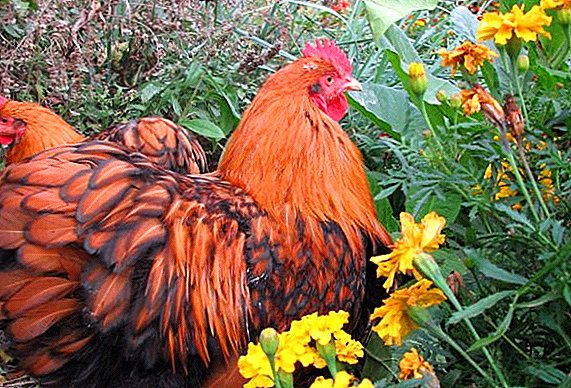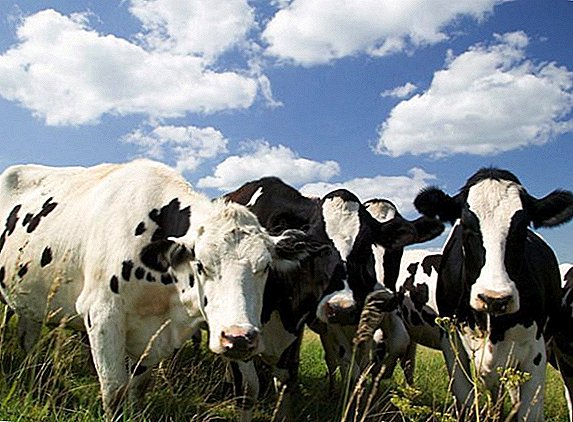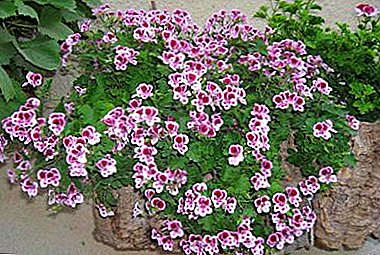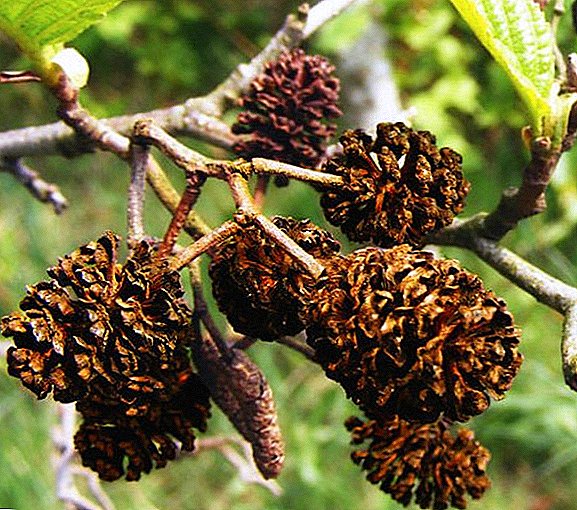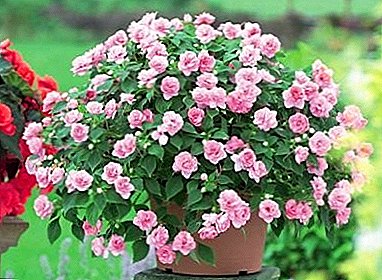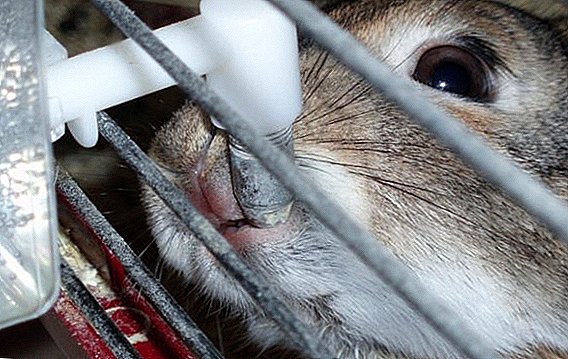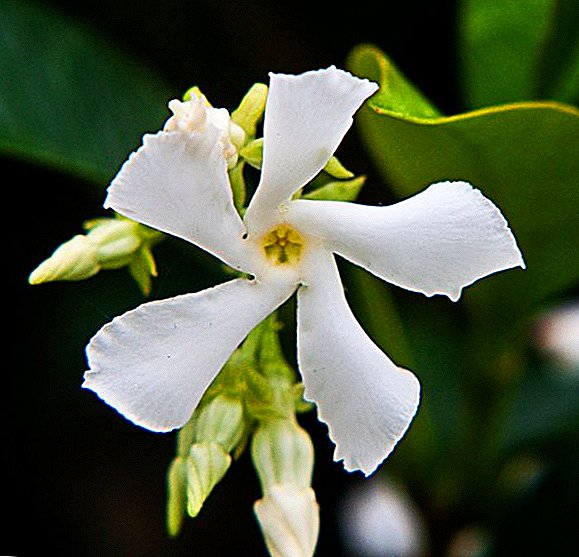 The flowering of jasmine can not leave anyone indifferent, because in addition to attractive flowers, the plant also has a very pleasant smell. You can grow jasmine on your backyard, and for those who really decided to do this, we have prepared a list of the most popular types of jasmine.
The flowering of jasmine can not leave anyone indifferent, because in addition to attractive flowers, the plant also has a very pleasant smell. You can grow jasmine on your backyard, and for those who really decided to do this, we have prepared a list of the most popular types of jasmine.
What does jasmine look like: plant description
How jasmine looks, almost all plant lovers know. However, most of us are in great delusion, as in Ukraine and Belarus very often the jasmine is mistakenly referred to as the bush chubushnik. This is due to the fact that the chubushnik has some visual resemblance to jasmine, and also has a no less sweet aroma.
But here is only chubushnik - in most cases, deciduous shrub, which belongs to the family Hortensia. This jasmine belongs to the family Maslinov, and is a straight or climbing shrubs, most of which are evergreen. 
Looking at the many species of the plant being described, it is almost impossible to unequivocally answer the question of how jasmine grows. Its shrub can consist either of shoots or of lianas, the leaves can also be trifoliate or pinnate (there are no stipules).
Similar in all types of jasmine are large flowers with a strong sweet aroma, which can grow both separately from each other, and lush inflorescences. After flowering, the flowers are transformed into berries, within which seeds ripen.
Did you know? Jasmine essential oil, which is used in perfumery, is the most expensive in the world. For 1 kilogram of such a substance you will have to give about 6 thousand cu, since about 7 million flowers are required to obtain this volume of oil.In its natural environment, jasmine is distributed in the subtropical climatic zones of South and Southeast Asia, Africa, Australia and America, but where jasmine grows, it does not have to be a warm climate.
Modern decorative types of jasmine are distinguished by good frost resistance, therefore they can be grown in open ground even in regions where the temperature drops to -30 ° C in winter. Below are the most popular ones.
Jasmine grandiflora
This type of jasmine is a shrub with climbing vines, which are able to reach a length of about 10 m, all the shoots from the bush naked. Jasmine grandiflora is among the evergreens. Differs opposite feather-like leaves of elliptical shape with a pointed tip. The length of each sheet varies from 2 to 3 cm. 
The blossom is very attractive - the flowers are collected in umbrellas, each of which contains from 6 to 10 fairly large copies of white color. Umbrellas are formed only on the tips of the shoots and have a very strong sweet aroma. It is noteworthy that the flowering of this type of jasmine is not only plentiful, but also long, because it can last from June to October.
Multiflorous Jasmine
Multiflorous jasmine - shrub capable of stretching up to 2 meters in height. Branches are weak, but all its shoots are climbers, so the plant looks quite lush. It has alternate oval leaves, which are distinguished by wavy edges and a sharp top. The color of the leaves is dark green. 
During the flowering period, the bush is covered with a very large number of large flowers that are formed at the top of each shoot. Flowers in this case are collected in clusters of 3-5 pieces. They have a narrow tubular shape and five-blade limb. During the formation of buds, they have a pink color, but when they bloom, they become snow-white. The peculiarity of multi-flowered jasmine is in a very strong aroma, which in intensity wins over all other species.
Jasmine golotsvetkovy
Another shrub with a small number of shoots that do not stretch up, but simply wilt down. They have quite a few leaves, and even those that are small and trifoliate. Leaf color is bright green. In winter, most of the foliage is showered from the bush, but with the arrival of spring, their number is restored again. 
During flowering, the bush is covered with very large single flowers that have a bright yellow color. They appear in the bosom of each leaf. The flowering period of this jasmine falls in the winter - from January to April, which gave it the second name "winter jasmine".
Jasmine officinalis
Among the varieties of jasmine, virtually all species are used in traditional medicine, but most often, for this purpose a medicinal species is planted, which at the same time has very good decorative qualities. The bush of this type of jasmine consists of perennial lianas, from which a lot of thin and smooth twigs depart. 
Branches are rather long, sparsely covered with oblong-lanceolate leaves. A characteristic feature of medicinal jasmine leaves is the bright green color of the upper part, and the light green color of the lower part.
The flowers of the variety are small, but gathered in lush umbrellas of 5-6 pieces. They differ in white color and very fragrant aroma. The flowering period is very long and it stretches from April to the last days of summer.
Important! Despite the fact that all varieties of jasmine are among the light-loving plants, they should be planted on the site either on the west or on the east side. This is due to the fact that excessively intense sunlight can cause falling leaves on the bushes.
Jasmine finest
Another evergreen vine plant whose shoots are down. The lianas are covered with simple, oval-lanceolate leaves. The length of each leaflet can vary from 2.5 to 3.5 cm. Their color is light green, and there is also slight hairiness in the lower part. 
The finest jasmine is also different umbrellas of large flowers (the diameter of each flower can be 2.5 cm). The color of the flowers is white, and the aroma is sweet and very pleasant. The first flowering in the natural habitat occurs in January and lasts until March.
Jasmine bisa
This species is one of the most popular in ornamental gardening. This is an evergreen shrub, which can also be of a modest growth. 
The length of each creeper often reaches 2 m and there are longitudinally striated shoots on it. They are covered with opposite leaves ovoid. The length of dark green leaves with a pointed tip and the presence of bilateral pubescence can reach 5 cm.
Flowers are formed on the tops of all shoots. Differ in large size (up to 2 cm in diameter), as well as a pleasant pink or dark pink color. Assembled into attractive umbrellas of 1-3 pieces, thereby enhancing the pleasant sweet aroma. Flowering begins in May and lasts for 2-3 months.
Did you know? Among all types of jasmine, of which there are about 200 in the world, 90 are indoor plants.
Jasmine Sambuck
Kind of jasmine Sambac is a very large lianane plant that can stretch up to 6 m in length. 
Its stems are stiff, pubescent, supplemented with opposite leaves (only in rare cases they can be placed in 3 pieces). Leaf plates differ egg-shaped and pointed at the apex, and their length can reach 10 cm. There is practically no pubescence.
Flowers of jasmine Sambaka - large, gathered in racemes of 3-5 pieces. Flowers - semi-double or terry, have a white color and a pleasant aroma. The bushes form a very abundant flowering, which pleases the eye from March to October.
Jasmine oblate
Jasmine flattened in its description is slightly different from other species due to pale purple flowers. They have a delicate aroma and a long flowering period, which stretches over the summer. This shrub requires regular shortening of shoots, which will stimulate the formation of more flowers. 
Important! It is not recommended to allow free growth of jasmine vines, as they may take an unattractive shape. To really look decorative plant, its vines, it is important to regularly prune and tie to the supports.
Jasmine otvorochenny
Leaves jasmine is a shrub plant whose shoots are covered with paired leaves of bright green color. The light yellow flowers on the shoots are very small. Petals turned away. When flowering, the plant exudes a very pleasant aroma, which can be enjoyed throughout the long period of flowering, that is, all summer. 
Each gardener should think about growing real jasmine in his plot, as this plant can not only visually decorate the garden, but throughout the summer to fill it with a pleasant and sweet aroma. Do not forget that jasmine flowers are an excellent addition to tea, and also have many medicinal properties.



